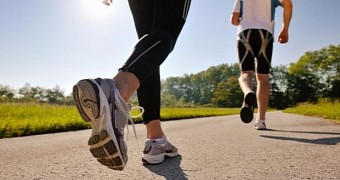A racing heart, panting and sweating are all obvious side effects of exercising. However, there's much more happening to our body when we go for a jog or join an aerobics class.
In a recent investigation, researchers at the University of Sydney in Australia counted around 1,000 molecular reactions that happen in our muscles when we exercise.
Together with their colleagues at the University of Copenhagen in Denmark, the scientists analyzed human skeletal muscle biopsies from four volunteers. The tissue samples were collected after the volunteers, all healthy men, had exercised for about 10 minutes.
Having studied the chemical profile of the tissue samples obtained from the study participants, the research team documented around 1,000 molecular changes.
In a report published earlier this week in the science journal Cell Metabolism, the scientists say these reactions had all been brought about by the intense exercise routine the volunteers had been subjected to prior to collecting skeletal muscle biopsies and analyzing them.
“Exercise produces an extremely complex, cascading set of responses within human muscle,” University of Sydney specialist Nolan Hoffman said in a statement.
“While scientists have long suspected that exercise causes a complicated series of changes to human muscle, this is the first time we have been able to map exactly what happens,” he added.
And now the race is on to develop drugs mimicking the effects of exercise
Regular physical activity is known to reduce the risk of cardiovascular disease, neurological conditions, and even type 2 diabetes. However, not everybody can stick to a proper exercise routine.
Now that they have a better idea of what exactly goes down in our body when we exercise, scientists are considering developing drugs that mimic the effects of physical activity.
The idea of designing drugs that trick the body into thinking it's exercised and that deliver all the health benefits of physical activity without us having to do any work has been around for quite some time now.
Still, having discovered that exercise correlates with about 1,000 molecular reactions in our muscles, the University of Sydney research team and their colleagues at the University of Copenhagen have a much better idea of what these drugs should be engineered to do.
“With this exercise blueprint we have proven that any drug that mimics exercise will need to target multiple molecules and possibly even pathways,” explained University of Sydney specialist David James.

 14 DAY TRIAL //
14 DAY TRIAL //